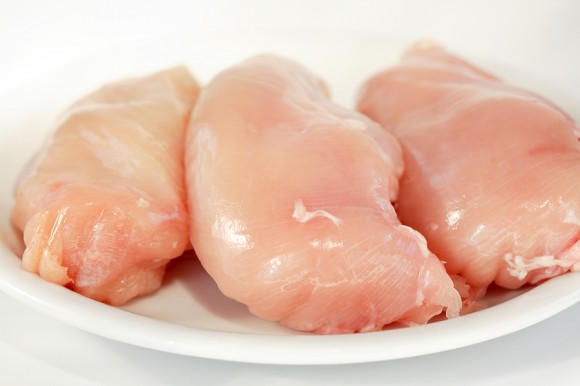U.S. poultry producers have dramatically reduced the presence of harmful bacteria in poultry meat, a trade group said on Friday in defending the food safety record of the industry.
“The numbers tell us we’re making tremendous progress,” the National Chicken Council said in a statement that described poultry as overwhelmingly safe to eat. It pointed to steps taken by producers and processors to reduce the presence of salmonella bacteria, which can cause food-borne illness.
The trade group contested the conclusions of a Consumer Reports nationwide sampling of raw chicken breasts for potentially harmful types of bacteria, which was released last Thursday.
Consumer Reports included three types of bacteria that the government does not consider to be risky, and declared some antibiotic-resistant bacteria to be “superbugs” when effective medicines may still be available to fight them, the NCC said.
Prevalence of salmonella on chicken carcasses is down 55 percent in five years according to Agriculture Department tests, said the group, and the latest USDA quarterly report said 2.6 percent of carcasses tested positive for the bacteria, well within USDA targets.
Consumer Reports said half of its samples contained bacteria resistant to three or more antibiotics and 11 percent contained two types of bacteria with multi-drug resistance. Consumer Reports said it tested for six types of potentially harmful bacteria.
Also on Friday, the Organic Consumers Association said the government should impose a mandatory ban on non-medical use of antibiotics in livestock instead of its plan, announced this month, for a three-year voluntary phase-down.
Chicken is the most widely consumed meat in the United States. Americans are forecast to consume nearly 84 pounds per person in 2014, compared to 53 lbs of pounds of beef and 48 pounds of pork
Topics Agribusiness
Was this article valuable?
Here are more articles you may enjoy.



 Grand Jury Indicts ‘Hole in Won’ Owner on Prize Insurance Fraud Charges
Grand Jury Indicts ‘Hole in Won’ Owner on Prize Insurance Fraud Charges  USAA to Lay Off 220 Employees
USAA to Lay Off 220 Employees  Harvard Study Again Stirs the Pot on Demotech Ratings of Florida Carriers
Harvard Study Again Stirs the Pot on Demotech Ratings of Florida Carriers  North Carolina Adjuster and Son Charged With Embezzlement in Roof Jobs
North Carolina Adjuster and Son Charged With Embezzlement in Roof Jobs 

